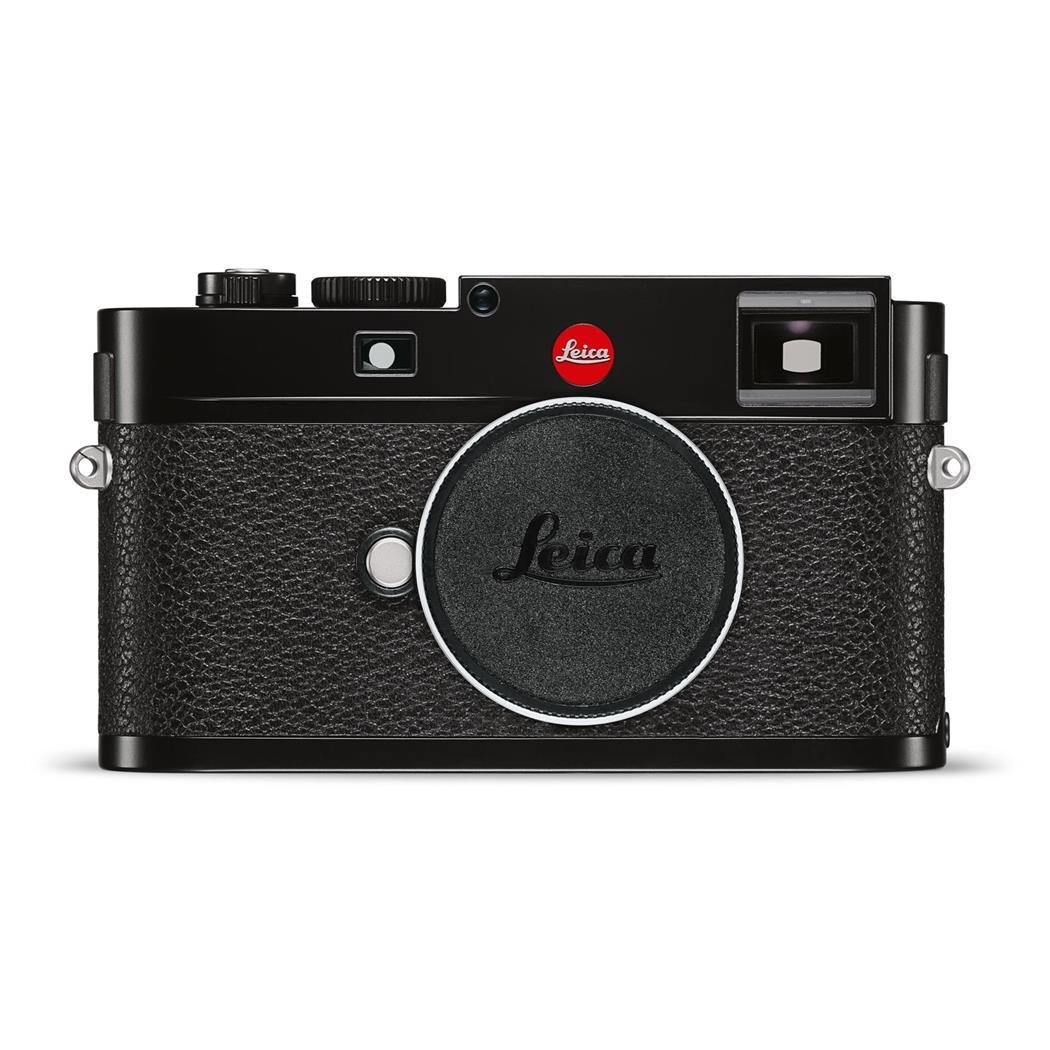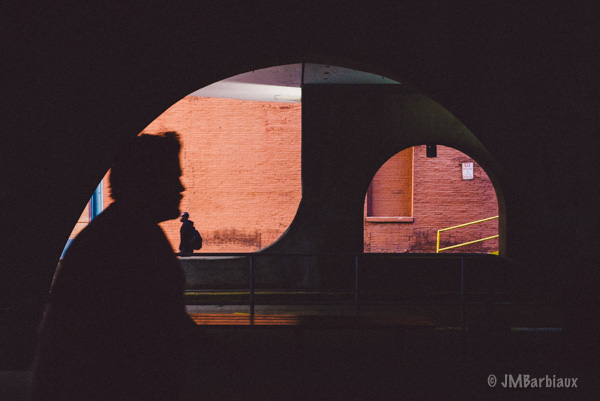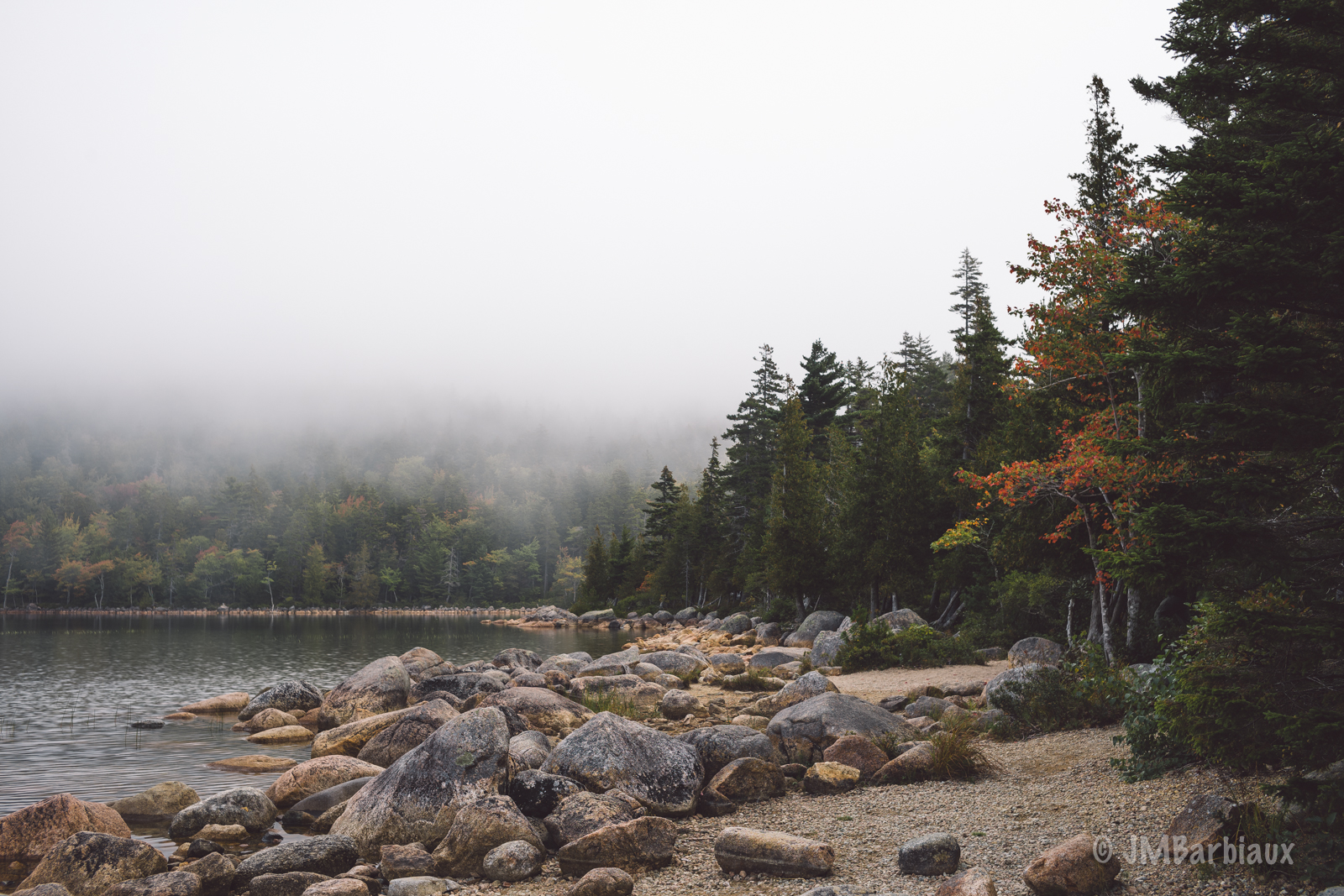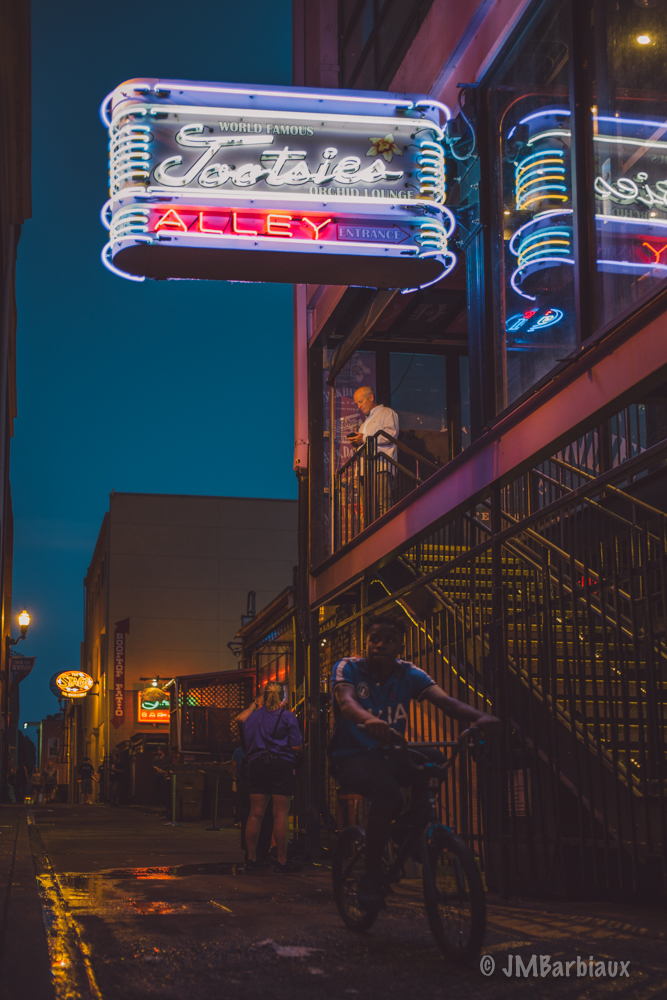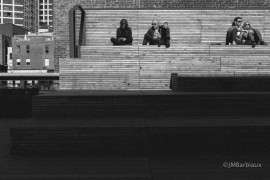The best camera, the best lens, the best this or that is all relative to your individual shooting needs and styles. What camera or lens that is best for one style of photography may be awful for another. With that being said, there are a few cameras out there that are so versatile that you’d probably be able to make them work in just about any situations… That doesn’t mean they will be the best in all situations but they will work really well in most.
All but a few (the Leica M’s and Nikon Df ) of the cameras listed below are what you’d call mirror-less. The easiest way to explain this is… you know that mirror that flips up and out-of-the-way when you go to take a shot? Ya, these don’t have them. That is mirror-less. Why get rid of a mirror? Other than the fact that it’s one less moving part that could potentially fail, the removal of the mirror greatly reduces the size of the camera.
Good Street Photography Cameras Tend To Be Small And Inconspicuous
The first, and one of my favorite, would be the venerable Fujifilm X100S, X100T, X100F. This camera has received rave review from almost every person who has picked one up. Some of my best shots I’ve ever taken were with the Fuji X100S primarily because it was small enough to drop in a coat pocket and you know what they say… The best camera is the one that you have with you.
Street Photography Camera Review of the X100T
The Fuji X100S As Your Primary Camera
Photo Project: The X100S Challenge (Week 3)
The newest version as of this writing is the Fujifilm X100F .
 Sexy, right? Trick question, its one of the best looking cameras on the market. The X100S is an incredibly capable camera packed into an incredibly compact body. Some of the stand out features include its ability to switch between an optical viewfinder and electronic viewfinder, manual aperture ring around the lens (comforting for those of you familiar with range finder cameras), and a built-in 3 stop neutral density filter.
Sexy, right? Trick question, its one of the best looking cameras on the market. The X100S is an incredibly capable camera packed into an incredibly compact body. Some of the stand out features include its ability to switch between an optical viewfinder and electronic viewfinder, manual aperture ring around the lens (comforting for those of you familiar with range finder cameras), and a built-in 3 stop neutral density filter.
 Panning shot taken with the Fuji X100S, panning can be difficult on even the best high-end DSLR’s
Panning shot taken with the Fuji X100S, panning can be difficult on even the best high-end DSLR’s
If you want better image quality you’ll have to step up to a full frame camera. Micro Four Thirds cameras like the venerable OMD EM5 and EM1 have superb image quality but suffer from the limitations of their sensor size (being smaller than something like the Fujifilm X100S or the Fujifilm X-T1
)… That being said, M4/3 size sensors are fully capable of outputting professional quality street photography, and because of their size are well suited for it.
How big of a difference does the sensor size make? Virtually none in ideal lighting, the difference is noticeable in extremely difficult lighting. There is no reason why the M4/3 format wouldn’t work for professional street photography.
The next camera that’s also a spectacular street photography tool is the Olympus OM-D E-M1 Mark II . The EM1 is larger than the X100S but offers more versatility in lens choices (the X100S is a fixed lens camera with only a few options).
The Olympus OM-D E-M1 (the less expensive original version, the link for the newest is in the paragraph above) is hands-down the best feeling camera I’ve ever held, the buttons fall in line under your fingers as if it was built with YOU in mind. Everything is intuitive and works as it should. The numerous buttons are customizable and did I mention it just feels good to hold…
Olympus has made strides with their image quality on the M4/3 format. It’s worth mentioning that the EM1’s predecessor, the OM-D E-M5, is just as capable of a camera and cheaper. I will say the EM5 isn’t as comfortable to hold and feels a bit anemic to me. Also, if you do much long exposure photography I’d tell you to skip the EM5 because the sensor tends to get too hot and you end up with a bunch of red, white, and blue pixels in shots longer than 30 seconds.
It’s also worth noting that the EM1 and EM5 are considered weatherproof and with a weatherproof lens you’ve got yourself a pretty versatile camera.
Camera Reviews And Sample Pics
The next camera worth mentioning is the Sony a7R III which is a full frame camera with 12.2 megapixels and a bunch of other ground breaking technology
that you’ll probably never use but sounds cool. This camera is ugly… I know you shouldn’t judge a book by its cover but this isn’t a book and it’s ugly. It’s one of the smallest, if not the smallest, full frame cameras on the market so if size is a big deal to you then it’s worth investigating.
 It’s worth noting that the lens selection isn’t as vast as other manufacturers (and it’s expensive), but I’m sure that as it matures and new lenses are released the prices will eventually drop (not sure I’d want to pay the early adopter premium on Sony lenses). There are also optional lens adapters you can get, at an additional cost, if you’re transitioning from a different camera manufacturer.
It’s worth noting that the lens selection isn’t as vast as other manufacturers (and it’s expensive), but I’m sure that as it matures and new lenses are released the prices will eventually drop (not sure I’d want to pay the early adopter premium on Sony lenses). There are also optional lens adapters you can get, at an additional cost, if you’re transitioning from a different camera manufacturer.
When I reviewed the Sony a7R II (which is the version before the one mentioned above) and it scored a 9/10. The biggest complaint I had was that the menu system is a disaster and finding what should have been front and center involved lots of digging. You can read that review here.
Other than price, and lack of native lenses, the camera is actually quite impressive… It can output 4k video, it can push the ISO up to 409,600 (you’ll never do this), and it’s packing a full frame sensor in a compact (albeit ugly) body.
I’d be remiss not to mention the Fujifilm X-T1 , a camera that was released in direct competition with the OMD line from Olympus. The image quality of the XT1 is slightly better than that of the OMD line so if you are a perfectionist I’d lean towards Fuji. It’s also worth noting that if you shoot in JPEG (you shouldn’t) format then Fuji would again be my top choice, their JPEG files are the best I’ve seen from any camera on the market (obviously that is subjective).
 The Fujifilm X-T1
The Fujifilm X-T1 pushed the envelope with their electronic viewfinder (evf), you would really have to try to find a fault with it. When my wife wanted to get into photography I had recommended, and bought, this camera for her. The learning curve is hardly a curve at all, she was able to pick it up and start shooting within minutes. That’s one of the advantages of an evf, you can see the adjustments you’re making with aperture, ISO, and shutter speed right in the viewfinder which helps eliminate the frustrating over/under exposure many budding photographers encounter… It can be a much more rewarding experience.
Check out my article The New Guide To Learning Photography: The Old One Was Backwards to learn why I believe learning the exposure triangle (the relationship between ISO, aperture, and shutter speed) isn’t necessarily the best thing to do (for new photographers) right away.
Fujifilm has developed an adapter, similar to what you’d get for other cameras to use different manufacturers lenses, that allows you to use M mount lenses (Leica lenses) on the X mount X-T1. The Fujifilm X-Pro 1 M-Mount Lens Adapter sells for about 100 dollars which is a drop in the bucket if you look at the prices of the Leica lenses.
A camera that is near and dear to me is the venerable Nikon Df , the camera that you could say started it all. This was the camera that I would say propelled my professional business and I still use it from time to time. If you’re looking for a small but incredibly versatile camera with less than 17 Megapixels then I’d recommend this one hands down. Because of the type of clients I typically work with I need larger image files for printing needs so it shelved my Df for the foreseeable future (except for family things).
The Df is a beautiful camera with ridiculously good low light performance. At one time, not so long ago, it was dubbed the King of the Night. The low light, high iso, performance was such that it made my D800 look bad. Just now, cameras like the Leica M10 and the others in this list have started to surpass its low light capabilities (just barely).
Why do I keep talking about low light performance? Being able to hand shoot images after the sun has gone down or indoors is a huge advantage in street photography. Street photographers value packing light and fading into the background to capture everyday life.
Finally, we come to Leica, the camera that started it all. Leica has built a solid reputation among street photographers and many professional’s you talk to can tell you all about their first Leica, how they got to the point where they could afford one, and why they keep buying them. In fact, many Leica shooters still own their first Leica.
Below is a list of three of the Leica cameras that I own and shoot with on a regular basis. Those of you new to PhotolisticLife.com, I shoot 99% of my street photography with a Leica these days. My favorite Leica’s to date are the film M7, the M262, and the M10.
 Let’s start with the least expensive and work our way up. The Leica M7
Let’s start with the least expensive and work our way up. The Leica M7 is still an expensive camera, even though it’s a film camera, at approximately $4,400 new (at the time I wrote this article). I got mine used from Leica Los Angles from their used Leica M store for around $2,500. The camera can be had for less through eBay but I don’t trust eBay, sooooo.
Obviously if you aren’t interested in shooting film then this camera isn’t for you. It’s quite an investment since getting film developed properly these days costs lots of $$$ unless you’ve got a dark room or other arrangement in your house. You can read my review of the Leica M7 here. I thoroughly enjoyed shooting with the M7 but to be honest, I don’t like spending so much money on film development and I’m too busy to do it myself… So I moved on to digital.
One of my all-time favorite Leica cameras is the Leica M (Typ 262) . From a simplicity and capability standpoint this may be the best street photography camera out there. The menu is stripped down, leaving you to only worry about capturing the elusive decisive moments. The image quality is superb up to about ISO 3200, this was the first digital M to achieve this. All of the digital M’s before this churned out unusable images if shot with anything but ideal settings (you can read more about that in my review of the Leica M9, where it scored a whopping 5.3/10 if you’d like).
Initial Review Of The Leica M262
Long Term Review Of The Leica M262
Pittsburgh street photography shot with the Leica M262
Most of my street photography for about a two year period was shot with the M262, all the way until Leica released the M10. Now, 99.9% of my street photography is shot with the M10.
The Leica M10 is the best digital Leica to date, it’s got great image quality, build quality, and better reliability (Leica’s can be a bit finicky). Believe it or not, the digital Leica M’s these days are more versatile than ever. I find myself shooting landscapes, long exposure cityscapes, and everything in between. The size of the camera is perfect for an everyday carry camera.
Shooting light trails in the city with the M10
Landscape photography with the M10
Low-light, hand-held, street photography with the M10
The Leica M10 would be the camera I chose from this long list knowing what I do now about street photography. The camera has great image quality, versatility, and build quality which means I don’t have to worry about it falling apart while traveling. That’s not to say Leica is the best street photography camera you can buy… It’s just the best for me.
Here are some resources if you’d like to read more about the Leica M10:
A Street Photographers Review Of The Leica M10
Initial Thoughts After Switching To The Leica M10
The Leica M10 In Coastal Maine
Conclusion
At the end of the day, you could be a great street photographer with nothing but your camera equipped phone. The list of cameras above is by far not an exhaustive list, I have shot street photography with my Nikon D850 as well and didn’t blow up. The size of your camera matters less than your attitude towards shooting in the streets. If you are afraid to photograph a stranger the size or quality of your camera doesn’t normally make that fear go away (if you want to defeat that fear read this article on overcoming your fear of street photography).
Carnegie Music Hall Wedding shot with the iPhone SE
Often, the best tool for street photography is in your noggin. Master that and the camera you use won’t really matter. Please feel free to share your thoughts and favorite street photography cameras in the comments section below and head over to Instagram if you’d like to follow my work @PhotolisticLife.




